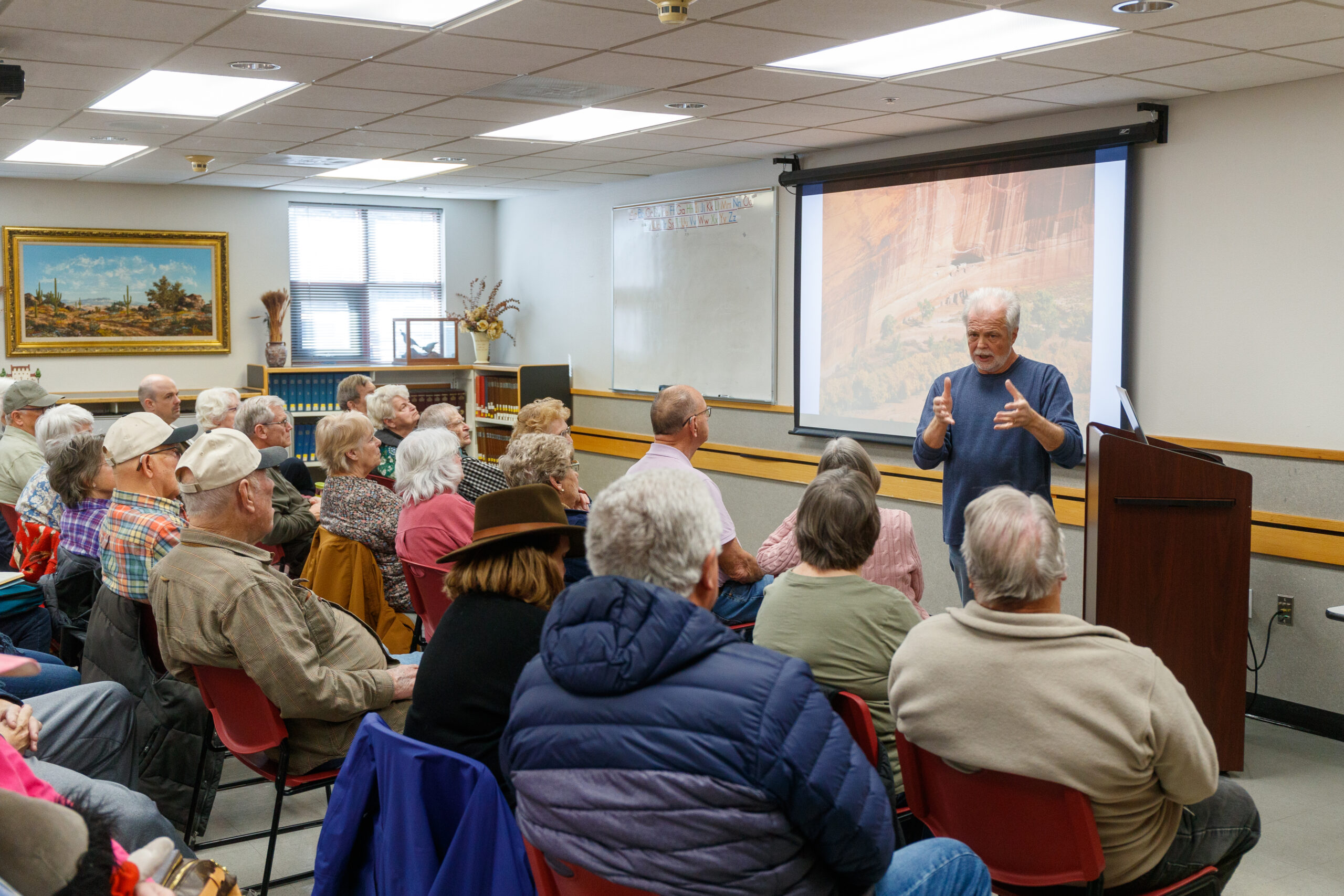Cottonwood author Roger Naylor discussed his newest book, “Arizona National Parks and Monuments: Scenic Wonder and Cultural Treasures of the Grand Canyon State,” at the Cottonwood Public Library on the morning of Saturday, Feb. 1.
Naylor said that he moved to Arizona from Ohio in 1975 to attend Northern Arizona University and fell in love with the state, eventually becoming a freelance writer for Arizona Highways magazine and the Arizona Republic. He recounted how his first visit to Pipe Spring National Monument in the isolated Arizona Strip, in his late teens, shaped his perspective on public lands and altered his life by providing him with a new way to see the world.
Pipe Spring, which was formerly the only water source between Hurricane, Utah and Fredonia, and 40 acres of the surrounding land were declared a national monument by President Warren G. Harding on May 31, 1923. Ancestral Puebloans and Kaibab Paiute relied on the spring for farming and hunting. In the 1860s, Mormon pioneers arrived with cattle, and by 1872, they had built Winsor Castle and established a ranch on the site; the future national monument also provided shelter for polygamists and their wives in the 1880s and 1890s.
“I thought all parks had to be the Grand Canyon or Yellowstone, or some of these other spectacular places I was visiting,” Naylor said. “I didn’t know there could just be a little tiny park that could tell such a large story. I’m going all over, reading the signs and just in awe of this chapter of history I had no idea existed. So it was after this that I started looking at the other small parks in Arizona … and see what they preserved … Fifty years later I’m still doing it and writing books about it, so I owe a debt of gratitude to little Pipe Springs.”
Naylor offered some advice to those interested in exploring the Grand Canyon-Parashant National Monument, established on Jan. 11, 2000.
“[That] is the hind end of the Arizona Strip, more than a million acres tucked away back there,” Naylor said. “It’s the most remote location in the lower 48 states … Do not visit this park … The roads will eat your tires. They will break your axles, like the wrong woman with the right idea will break your heart. They will leave you stranded. Your cell phone will not work, and a tow job will cost thousands.”
There are no paved roads across the monument that is so remote that “only five percent of its protected land” has been surveyed, according to the Grand Canyon Trust, although the site is nearly the size of Grand Canyon National Park.
While the wrong woman and the wrong road can lead to disaster, Naylor said his wife of 38 years, Michele Cokl Naylor — an artist and member of the Jerome Artists’ Cooperative — was the right woman when he first took her there, some 27 million years after the Turkey Creek Caldera erupted to form the park’s rhyolite pinnacles.
“[Chiricahua] is also the first place I ever took my wife hiking,” Naylor said. “We were living in Ohio when we got married, we honeymooned in Arizona, came out, I took her all around, said ‘This is we’re going to live someday.’ The first place I took her was [Chiricahua], because I thought, if she doesn’t get Chiricahua, that’s irreconcilable [differences]. So far as I was concerned, we could just divvy up the wedding presents.”
For those not inclined to hike, Naylor noted that Chiricahua offers a beautiful scenic drive that takes visitors through a series of rock formations, with accessible trails leading to some of the most impressive viewpoints, including the Faraway Ranch Historic District.
“Grand Canyon feels like a cataclysm paused just to catch its breath,” Naylor read aloud. “The silence is a symphony. The silence seduces and grabs hold of — wafting up from the abyss — a profound quiet [that] eclipses the petty noise of everyday life. The whisper of the canyon blots out all other sound. For the first time in your life, you can actually hear distance welcome to the Grand Canyon.”



